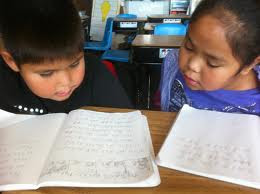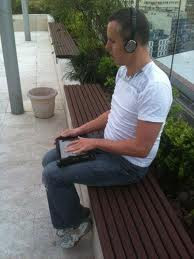Peer Editing
Peer editing can be either destructive or helpful to a students. If not done correctly, peer editing will not be effective and will do more harm than good. Throughout the years in middle and high school and carried on into my first year in college, I dreaded peer reviews. At the time, I thought there was no purpose of the task and just gave my peers the excuse to ridicule and to mock me. Let's face it; kids are ruthless. I went to school with a lot of Mean Margarets and Picky Pattys! As a result of my peer review experiences, I became inefficient in my criticism of my peer's papers. I was afraid to give any kind of criticism due to the fact that I was concerned with hurting his or her feelings.
I strongly believe that my experiences and opinions of peer reviews are due to the lack of proper instruction on how to edit effectively. The video What is Peer Editing? and the slideshow Peer Edit With Perfection Tutorial gave me excellent tips on how to a qualitative peer review and how to edit effectively. I have learned that complements and staying positive is essential to a qualitative peer review. Complements builds up your peer's confidence and self esteem. I have also learned that giving suggestions in a positive way also helps because it doesn't make him or her feel incompetent. For example, when suggesting on word choice say "Hey, instead of using the word good use the word excellent. It gives the paper more personality." Being cruel and judgmental is not an effective way on getting your point across. Also being specific in your suggestions helps as well. Vague criticism is not helpful to your fellow peer. Other helpful tips on what not to do in a peer review according to the video Writing Peer Review Top 10 Mistakes are don't rush through the peer review, don't change the subject, and don't be a Mean Margaret.
I strongly think that these videos and slideshow should be shown in classrooms all across the country. They get to the point on what not to do and clearly state on what you should do when it comes to critiquing someone's paper, blog, or even a comment on a social network. Peer reviewing is personal and it should always be done in a respectful manner.
Assistive Technologies
I have always wondered what it would be like to be deaf or blind. I have always thought that I would rather be deaf than blind any day. I would hate to not be able to see the world or where I am going or to be able to read a book. However, the advancement in science and technology has given the deaf and blind societies the ability to surpass these obstacles.
The Mountbatten brail writer, according to the video The Mountbatten, is an assistive technology that allows blind students to keep up in the classroom. The Mountbatten allows blind students to interact within a normal classroom setting. The advance technology takes a brail document and can convert it to print for teachers and students who do not know brail. This also allows the teacher to give feedback. This allows blind and seeing students and teachers to work together in group settings. I would use this technology to help students realize that not everyone is the same and that disabled people deserve the same amount respect as everybody else.It would also help the blind students feel part of a student community and bring normalcy to their lives.
Teaching Math to the Blind
One of the hardest subjects to master is math. It is ten times harder for someone who is blind. For blind students who want to go into engineering, mastering the math that is involved can be very difficult. In the video Teaching Math to the Blind, Professor Karshmer from the University of San Francisco introduces a machine that helps blind students to perform the simplest math problems to the most advance math problems. This technology is amazing. It consist of a grid and blocks with brail and the actual number on the block. A student scans a block and it talks to the student identifying what that block is. Then the student places the block in the grid and the grid tells the student what that block is relative to where it is in the grid. This allows the student to set up the problem correctly. This technology is incredible. I believe that technology for the impaired should be in every classroom. This really helps impaired students feel like they are part of the learning community.
iPad Usage For the Blind
One of the most amazing app features for the iPad is voice over. This allows visually impaired students to learn outside the classroom. One of the features that this includes is iBook. It's really easy for a visually impaired person to operate this system. All they have to do is run their fingers along the screen and when they find an app they want to open, all they have to do is double tap anywhere on the screen. The iBook is incredible. A blind student selects a book that they want to read and the system reads it aloud for them. This gives not only blind students but blind people all over the world there independence back. They no longer need the help from seeing people to do things they like to do. I hope to have this technology in my classroom one day. Not only for the blind but also to show my students what the world is capable of producing and what they could produce way beyond today's advancing technology.
Vicki Davis: Harness Your Students' Digital Smarts
In the video Vicki Davis: Harness Your Students' Digital Smarts, you find students who are learning on there own and in groups about how to use the internet and other computer technologies through hands on assignments. In their groups, students are given an assignment to look up and to practice with and when they have done so they teach the rest of the class how to do it. An example of this was the Tereform group. What was so amazing to me is that Ms. Davis gave them an assignment on how to use the tereform when she didn't know how to do it herself. This is true learning. Getting the students involved in teaching their peers is not only effective but it teaches them to be responsible and to be critical thinkers.
While watching this really cool video, I was starting to notice that I was comparing Ms. Davis' classroom to EDM 310. We may not be learning how to tereform, but were learning to be critical thinkers. Were also learning to be digital citizens. I have learned more in this class so far than I have ever learned in a "burp back" classroom. The quality of learning that Ms. Davis' students are doing should be in classrooms across the world. I plan on doing this type of teaching in my future classroom.




I would just like to say first off that you were really thorough in all of your topics. You really did the blog post assignment, and your writing is very flowing. I saw a few errors though. Look at the first sentence under peer editing. There shouldn't be an "a" there. I liked the fact that you used more than one picture. It shows you really care about your work. Good Job!
ReplyDelete" I was afraid to give any kind of criticism due to the fact that I was concerned with hurting his or her feelings." with that attitude you could never be a coach! I am glad you are changing your ways!
ReplyDeleteThorough, thoughtful, well done! Thanks!